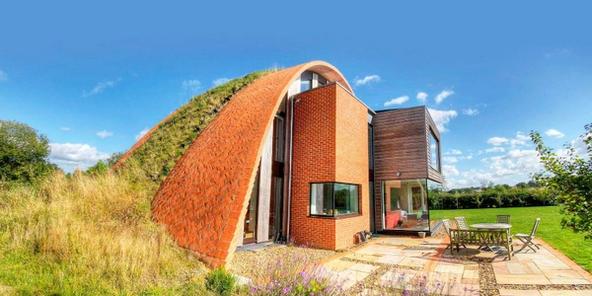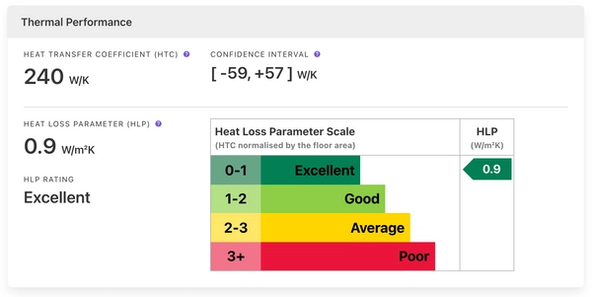Case Study
Crossway Performance Monitoring
Constructed in 2008 and featured on Grand Designs, Crossway was one of the first Passivhaus certified buildings in the UK. Admired for its innovation as well as its beautiful hand-made parabolic arch, the highly-acclaimed project proves that clever architecture need not be expensive.

Crossway was built by Richard and Sophie Hawkes and since its constriction has served as a family home and has been used to test out the latest eco-technology. Richard and Sophie have continued to build unique, energy-conscious homes through their practice, Hawkes Architecture.
Twelve years after its construction, the thermal performance of Crossway was measured using the SmartHTC thermal performance test, an innovative measurement method developed by Build Test Solutions. SmartHTC is based on temperature and energy monitoring carried out over at least three weeks while the house is occupied as normal. The measurement data is uploaded using a simple online interface and a metric of thermal performance is calculated.
Richard completed the measurement himself, with a keen awareness of the importance of delivering as-built as well as as-designed energy performance, using the measurement as a trial of the practicality of carrying out further measurements in other Hawkes Architecture projects.
The SmartHTC measurement showed that Crossway has excellent thermal performance. This is measured by the Heat Transfer Coefficient, which is a measure of the rate of heat loss for each degree of temperature difference between inside and out. To allow comparison between buildings, the Heat Transfer Coefficient is divided by the floor area of the house, termed the Heat Loss Parameter. A lower number reflects less heat loss and hence less heat required to keep the building warm.

The SmartHTC results demonstrate that the energy-efficient ambitions of the Passivhaus design are still being realised twelve years after construction. The measured performance is similar to the predicted performance at the design stage by the Passivhaus Planning Package (PHPP), with the prediction within the confidence interval of the measurement.
Buildings often have worse than expected thermal performance, the so-called "performance gap", so demonstrating as-expected performance is another validation of the design, construction and operation of this unique house. Richard Hawkes reflected on the SmartHTC results:
It's reassuring to see the data. We've always known that the house is comfortable and cheap to run but it's still good to see it in numbers. After living in the house for 12 years and bringing up a young family we've sort of got used to how well the house works so haven't been so focussed on “being efficient” in recent years. We know from all this time living in the house that bills are negligible so we feel we can just enjoy the house in the comfort of knowing that it doesn't use much energy.




